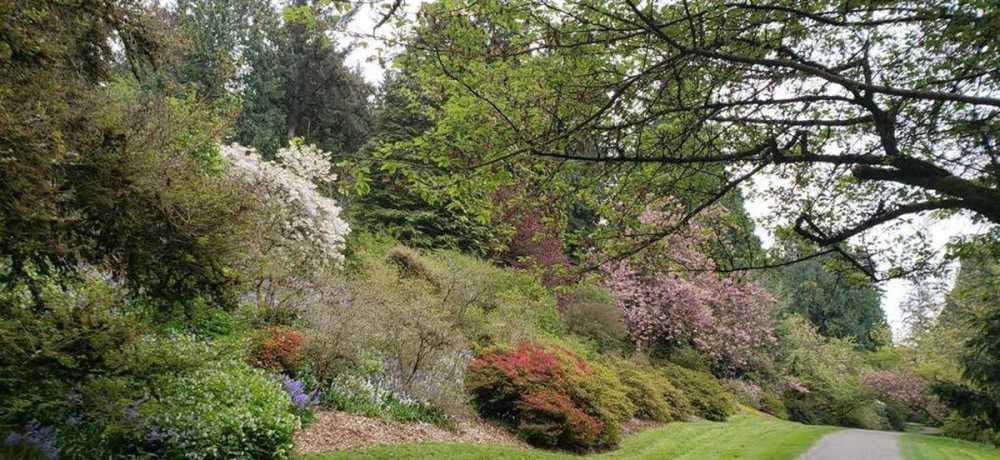Sloping gardens: materials, plants and useful tips

How to make the most of sloping gardens
Designing a sloping garden requires several considerations such as control of the water, a particular focus on the safety of the materials and furnishings chosen, as well as the plants planted. Conditions which at first sight don't encourage the creation of a green space. But where there's a problem, often there's also an opportunity.
Landscape architects and garden designers are well aware of this, but in sloping gardens they see the possibility of creating systems with a great aesthetic impact.
Stairs, terraces, walkways, small paths, gentle slopes: what might seem like a piece of land that's too hard to work with, if entrusted to expert hands and minds can be the key to conferring charm and uniqueness to your outdoor space. Whatever the setting.
Sloping gardens: use or modify the difference in height?
If you have a sloping garden, there are mainly two options: use or modify the height difference.In the first case, plant borders and plants with robust roots that retain the soil in critical areas, rustic covering plants (ceratostigma, periwinkle, genista, ivy) that stabilise the surfaces and furnishings that resist the force of gravity, such as vases, pots, flower boxes and furnishings. To facilitate walking up and down through the space, an informal, easy-to-maintain path or staircase made of gravel, stones or bricks can be added.
In the second case, on the other hand, more work will be required to create terraces with earthworks, fences, dry stone walls, stairs and other architectures.
In both cases, there must be a flat area for relaxing and meditating. A seat, a coffee table, an elegant pergola, choosing from the seductive and functional Corradi models, which will help create the ideal refuge for conversation, reading a good book or having breakfast, lulled by the sounds of nature.
This area must be paved to prevent rainwater runoff and stagnation from making it impracticable.
Which materials to choose?
Natural materials – stone, rock, wood, brick – are the most suitable for a project that is both functional and aesthetic because they are “poor” but extremely durable, requiring no special maintenance.To build paths, terraces and stairs you can use new or reclaimed wooden sleepers or more precious, luxurious woods, or even stone slabs, while for the retaining walls the most appropriate choice is natural rock.
A dry stone wall is the ideal place for spontaneous, resistant plants that over time will give the wall an enviable texture, mixing in with the stones.
In fact, wood and stone – and the structures built with them – stand up very well to time and weather, embedding in the greenery and becoming one with the surrounding land. But there's more: as they age, they acquire an evocative patina that gives the garden a pleasant vintage atmosphere.
Last but not least, using a draining material in the paving and steps of a staircase eliminates puddles, which can become dangerous when temperatures drop below freezing.
Plants and the lawn: instructions for use
Carpeting, falling, climbing, ornamental and native plants: the first commandment of the good gardener is to know and respect the climate and the type of terrain in the garden.However, a general rule applies to all sloping spaces: on the top of the slope the soil will generally be drier and subject to greater erosion, while at the bottom it will be more humid and rich. You could also opt for an “English lawn” (very difficult to mow on a slope), but wild herbs and flowers are preferable as they will create a natural carpet with uneven heights, giving an even greater charm to the green area
At the bottom it's best to plant lush species that absorb a lot of water, while at the top you should have a habitat suitable for species used to dry soils.
The most resistant perennial ornamental shrubs that prefer drained soils – Cerastium, Viburnum, Convolvulus, Pittosporum, Tradescantia x andersoniana, Parthenocissus tricuspidata, Othonnopsis cheirifolia – will serve to consolidate the soil and delimit the boundaries of the slopes, giving the garden unexpected colours and scents all year round.
And for those who don't have a slope...
Terraces and gentle slopes are so appealing that often they can also be found in gardens on the plains where, on the contrary, one of the most common desires is to create different elevations with earthworks, planting raised flowerbeds and adding pathways, stairs and walls.
This way an anonymous space can be transformed into an outdoor space with a strong personality, innovative design and attention to detail.
At this point it's up to you: if you have a more or less gentle difference in height around the house, it's time to give yourself a sloping garden. Indeed, your own unique, bespoke garden, beautiful to see and experience on any occasion.
